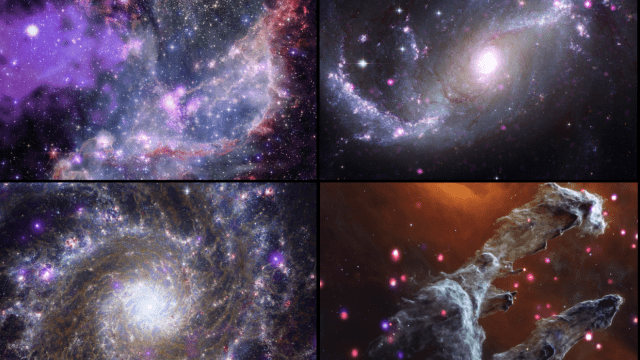Four remarkable cosmic scenes were recently imaged by four NASA space observatories — the Webb Space Telescope, Chandra X-ray Observatory, Spitzer Space Telescope, and Hubble Space Telescope — to showcase the objects as never before.
These powerful telescopes, alongside a few others, including the European Space Agency’s XMM-Newton observatory, recently had their imagery compiled by NASA image scientists, to produce unique portraits of well-known objects.
The observatories collect different wavelengths of light, meaning that only when their data is taken together can the full kaleidoscope of colour from an object be appreciated. XMM-Newton and Chandra take in X-ray light, while Webb sees in infrared, as did Spitzer, which has since retired. Hubble images primarily in optical light but dips into infrared and ultraviolet as well.
The barred spiral galaxy NGC 1672 is a wispy scene of baby blue and magenta in this vision, created from X-ray, infrared, and optical light. The image below features Webb, Hubble, and Chandra data.
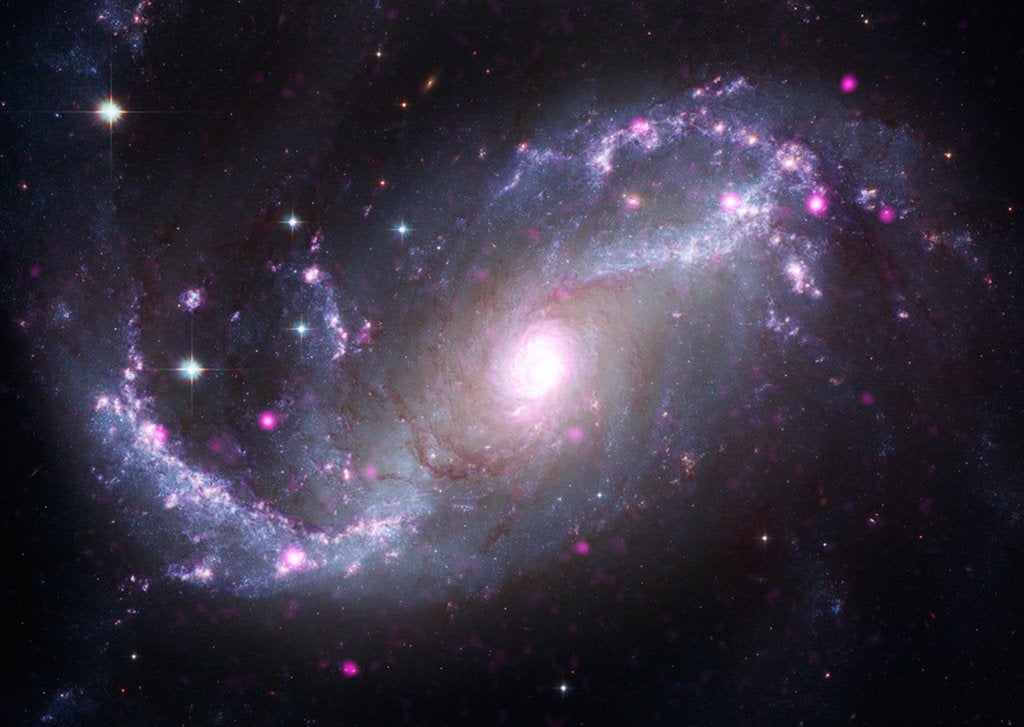
Barred spiral galaxies are classified as such because their arms are fairly straight near the galactic centre, as opposed to the wholly twisty arms of traditional spiral galaxies. The data from Chandra reveals X-ray-producing objects like neutron stars and black holes (showing up as the pinkish splotches), while Webb and Hubble’s views fill out the galaxy’s spiral arms with dust and gas.
The Eagle Nebula was also featured in the recent image showcase. The nebula is commonly known as the Pillars of Creation for its massive billows of gas. Webb first imaged the nebula in October, creating a new version of the famous shot captured by Hubble. The Chandra sources in this image are once again pink, while Webb’s data gives the gas and dust — within which stars form — a ghoulish blue hue.
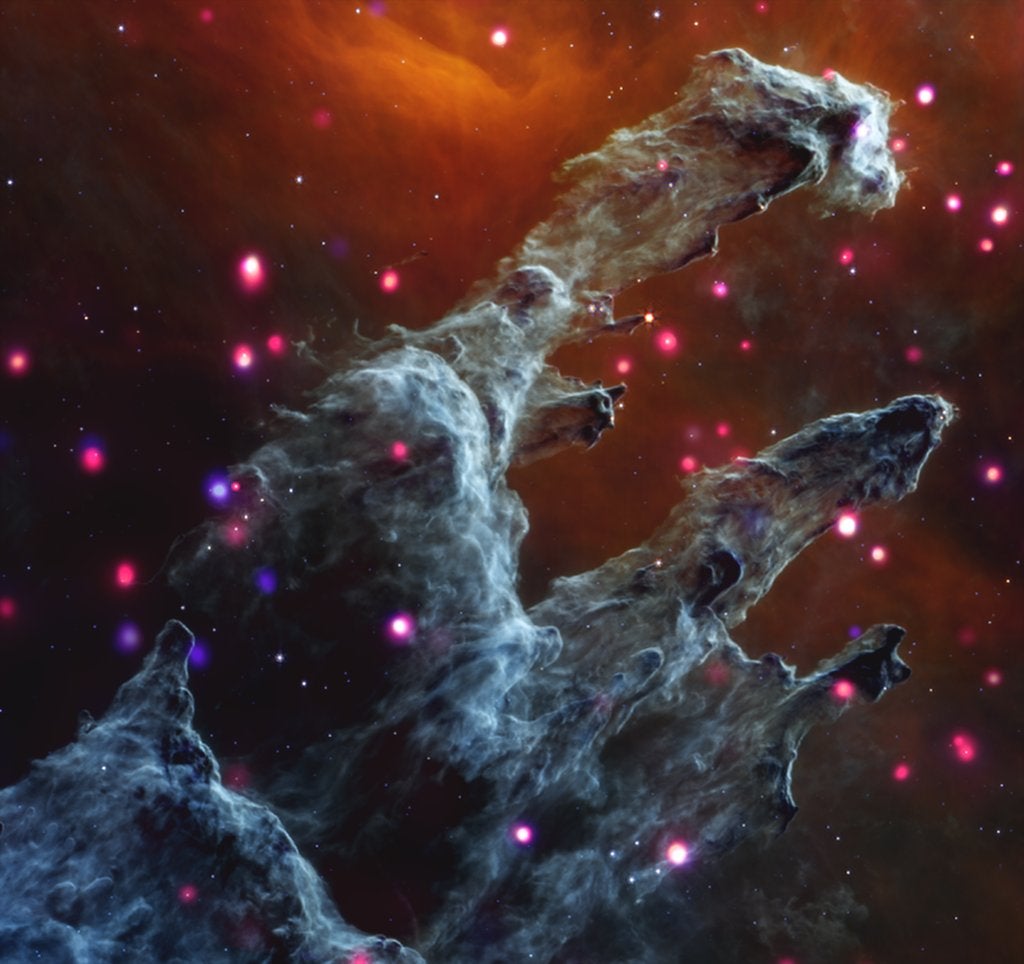
Messier 74, the Phantom Galaxy, is named because it is quite dim, though this image would make you think otherwise. 32 million light-years away, the spiral galaxy looks like a sparkling whirlpool in space. The Chandra data conveys how energetic (with X-rays) some parts of the phantasmal galaxy are.
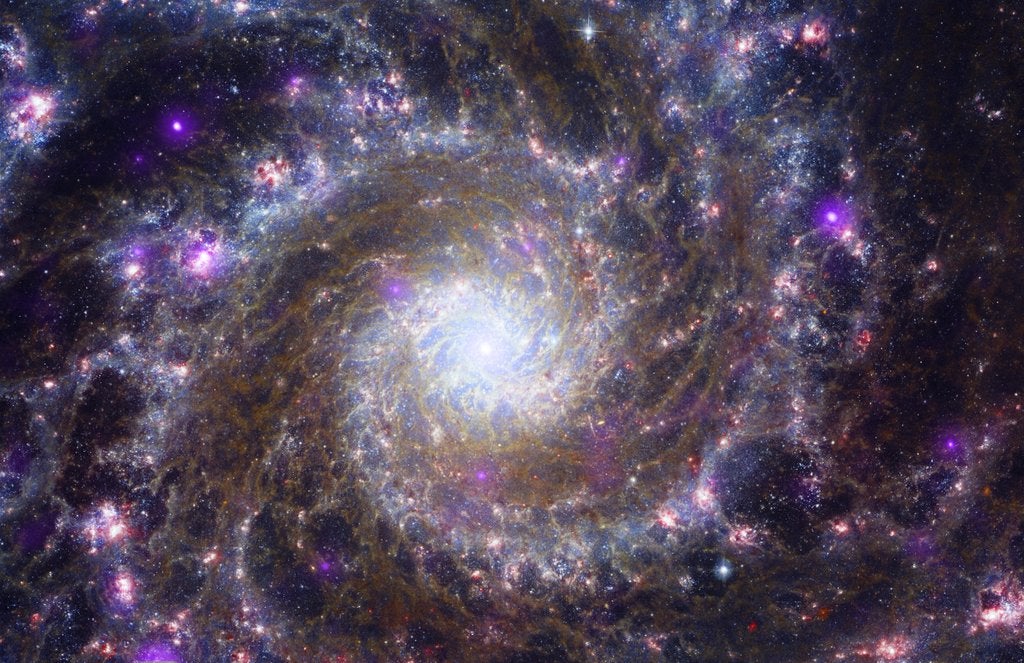
The NASA team also compiled observatory data of NGC 346, a star cluster in the Small Magellanic Cloud. This region and similar ones are intriguing sources of information regarding how stars and planets form, producing environments like our own solar system. The purplish cloud at left is the remainder of a supernova, the violent death of a star, which flung stellar material in every direction. These stellar deaths go on to feed more dynamic interactions in the cosmos.
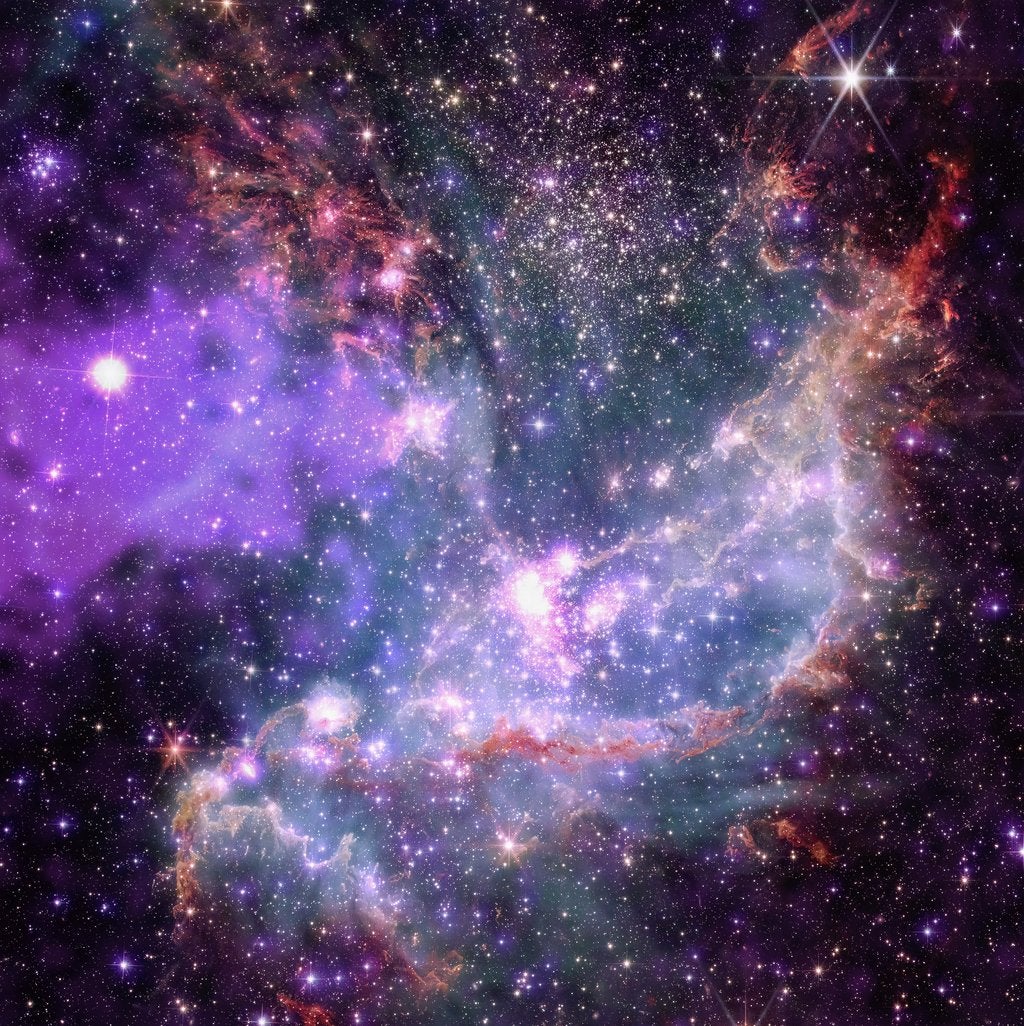
As these telescopes continue to image the cosmos, their data can be combined in new ways, to show off particular aspects of the universe. These decisions are deliberately made to emphasise areas of scientific importance, and they are crucial tools in science communication.
More: Webb Telescope Captures Countless Galaxies in New Image
